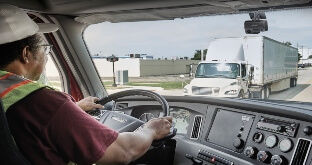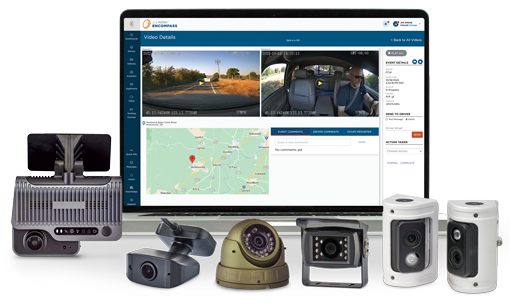Sr. Transportation Safety Editor — J. J. Keller & Associates, Inc.
DOT Rules for Mounting Tech Hardware on Windshield
Here's what you need to know about the rules for window obstructions and the mounting of safety technology.
Published On: 01/12/2024


Written by:
Daren Hansen
In recent years, the Federal Motor Carrier Safety Administration (FMCSA) has eased its rules for the placement of items that may obstruct the windshield on commercial motor vehicles. Those rules now allow more safety technologies to be mounted to the windshield (49 CFR §393.5) and allow them to take up more space (§393.60(e)(1)).
The rule changes give drivers and motor carriers more flexibility when mounting tech hardware on the interior of their windshields.
As a result of the rule changes, many temporary exemptions that were in place for specific device manufacturers are now unnecessary, including J. J. Keller dash cams.
Obstruction Rule
Initially, the “obstruction rule” allowed almost no technology be placed lower than 6 inches from the top of the windshield. However, the FMCSA added an exception in 2016 that allowed certain “vehicle safety technologies” to be mounted within the area swept by the wipers, as they required a clear view ahead to function correctly. This exception included hardware for collision or lane-departure warning systems, transponders, and dash cameras. Such devices had to be placed within 4 inches of the upper edge (or within 7 inches of the lower edge) of the area swept by the wipers.
The revised rule permits dash cameras, GPS devices, and other safety technologies to be mounted up to 8.5 inches below the upper edge of the area swept by the windshield wipers, or up to 7 inches above the lower edge. The device, however, cannot obstruct the driver’s view of the road or highway signs or signals.
More Safety Technology Allowed
The FMCSA also expanded the definition of “vehicle safety technology” in §393.5 to include almost any “system” or “item of equipment” that uses cameras, lidar, radar, sensors, and/or video to promote driver, occupant, or roadway safety.
Examples of eligible devices include:
- Fleet-related incident management systems
- Performance or behavior management systems
- Speed management systems
- Lane-departure warning systems
- Forward-collision warning or mitigation systems
- Active cruise-control systems
- Transponders
- Braking warning systems
- Braking assist systems
- Driver camera systems
- Attention-assist warning systems
- GPS devices
- Traffic-sign recognition systems
Keep Safety in View
When mounting devices on a windshield, keep more than the regulations in mind. Taller drivers or vehicles with smaller windshields may require special consideration. Ensure your drivers can see the road, highway signs, and any signals, or they could be cited for a violation.
The FMCSA applauds the use of in-cab technology that makes the road safer. The J. J. Keller® Dash Cam Pro and Encompass® Video Event Management deliver exceptional risk mitigation and protection from litigation. The proprietary, cloud-based back office prioritizes events, ensuring a quick response to accidents and dangerous driver behaviors. Plus, the solution offers over 500 training courses to improve driving skills. Talk with a compliance specialist today at 855.693.5338.
You may also enjoy the following articles:
Sign up for our newsletter!
We'll help you stay on top of regulations, best practices, and fleet industry news. Sign up to receive a monthly email notification with links to our most recent blog articles, free resources, and event invites.
